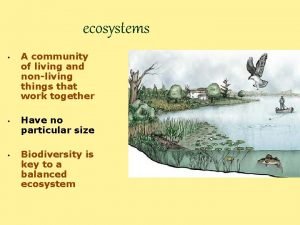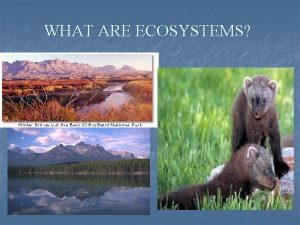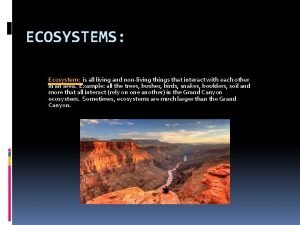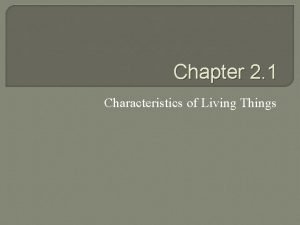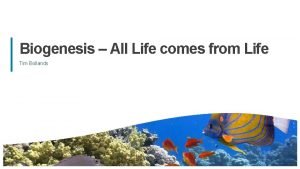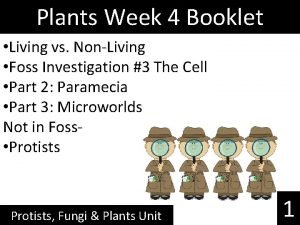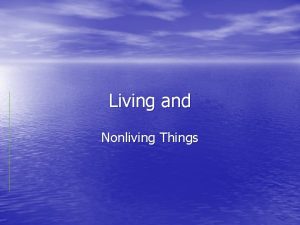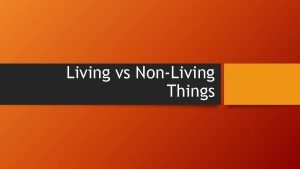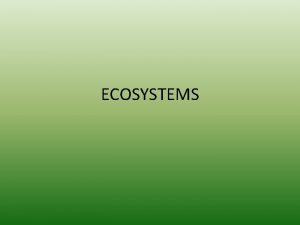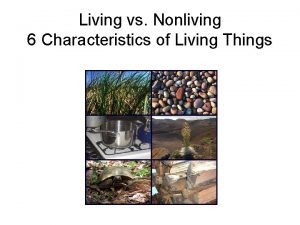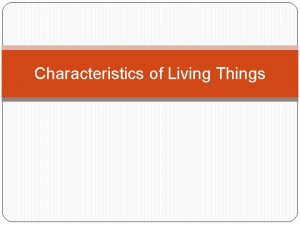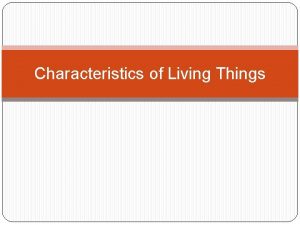Characteristics of Living Things Living Nonliving or Dead










- Slides: 10

Characteristics of Living Things Living, Nonliving or Dead!

How Do you Know its Alive? n n n What questions would you ask to determine if something was living? What’s the difference between living, nonliving and dead things? How do scientists determine if something is living?

How Do you Know its Alive? n Nonliving things – Don’t actively obtain or use energy n In its current state, never living n Example: Silk Flowers n n Dead – Don’t actively obtain or use energy n In it’s current state, was once living n Example: Dried Flower Petals n

Characteristics of the Living n n All living things are called organisms Organisms share these characteristics: n n n Organization Reproduction Development Homeostasis Adaptation

Organization n Orderly structure Parts and features same in species Species – group that produce fertile offspring Zebra Mussels

Reproduction n n Produce offspring Not essential for the survival of the individual, but is essential for the survival of the species Ring-tailed Lemur

Development n Grows and develops from birth to death n Growth – increase in living material n n Get taller, Gain weight, thicker fur Develop – get new or different structures n Grow teeth, develop horns Bullfrog Tadpoles

Homeostasis n n Adjust to changes in the environment Body physically changes to maintain balance of nutrients, temperature, water, and p. H level n Example: Sweating, shedding hair, change color Trumpet fish

Adaptation n n Inherited structures or behavior Allows organisms to respond to changes in the environment and survive Tarsier: Primate • Large eyes allows it to see well in the dark • Long fingers allows it to hold on well to tree branches

Identify the characteristic of life for each example. 1. 2. 3. 4. 5. Rabbit running from a fox Cat nursing a kitten Green feathers on a parrot Bear hibernating Tree grows fruit


